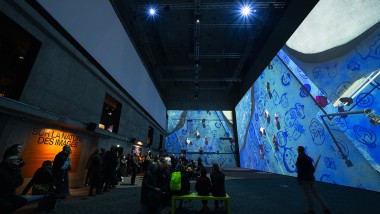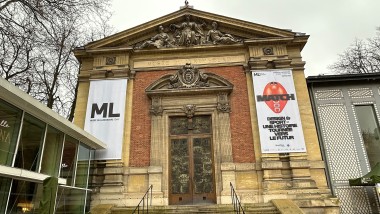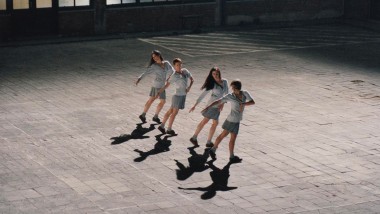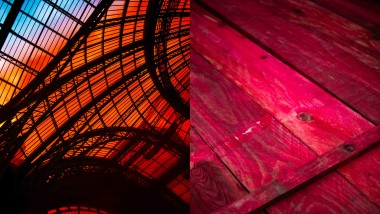
Medieval tapestry
From the 14th century, tapestry became established in the field of precious arts. Along with the nobility and clergy, the upper middle classes no longer hesitated to display their prosperity. They also commissioned expensive works to decorate and brighten up their homes.
This art developed mainly in northern Europe, northern France and Flanders, near the major centres of the wool trade. It culminated in the 15th century: after Paris and Arras, Tournai and Brussels became important centres of production.
A wide range of craftsmen
Prior to any tapestry production came the involvement of a merchant-entrepreneur. It was he who received the order and purchased the raw materials: wool, silk and sometimes even precious metals. He then chose the painter, the “cartonnier” (designer to layout the pattern), as well as the weaver who would produce the piece.
The actual manufacture of the tapestry itself involved three stages. Firstly, the layout designer prepared the preparatory design. This design could be commissioned from a famous painter. Several sources of inspiration emerge in their works: period engravings, illuminations and even painting. The cartonnier then enlarged this template on a board of dimensions similar to that of the final tapestry. He had to invert the image so that, once woven, the work correctly reproduced the template. Finally, the weaver produced the tapestry. There could be several of them, and if so, they were placed under the supervision of a studio master.
Due to the few archives which have survived, it is very difficult to know the names of any of those involved. We do know however that all craftsmen were subject to the control of their respective guilds.
Two main techniques
A tapestry is produced by interlacing warp threads with weft threads on a loom, by hand.
Two types of weaving loom existed in the Medieval period: high warp and low warp. The high warp loom stands vertically. It comprises two uprights supporting two mobile cylinders, called beams, one in the upper part, the other in the lower part. In the low warp loom, on the other hand, the warp is stretched across a horizontal plane. Pedals are used to lift a certain number of threads in turn, to obtain sometimes very complex patterns. On all types of loom, every alternate warp thread is pulled on a harness to create an empty space: the shed. In this shed, the weft thread passes perpendicular to the warp thread. It is moved by hand using a shuttle.
Tapestries may comprise several pieces. That is the case with the famous The Lady and the Unicorn, for example, a tapestry housed in the National Museum of the Middle Ages (Roman baths and Hôtel de Cluny), which is made up of six pieces of cloth.
Their themes may be courtly, mythological or religious, depending on the intended use of the work.


Design goes the extra mile for sport! The trailer for the next exhibition at the Musée du Luxembourg
Article - 11 March 2024
‘Rosas Danst Rosas', A contemporary dance by Anne Teresa De Keersmaeker in response to Stein
Article - 24 January 2024

